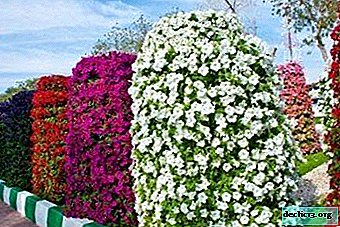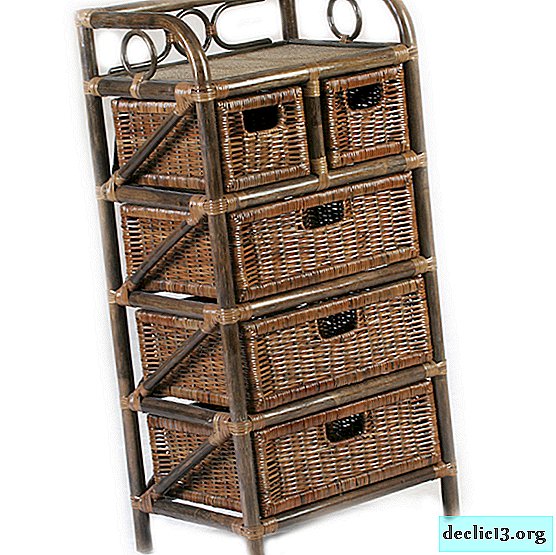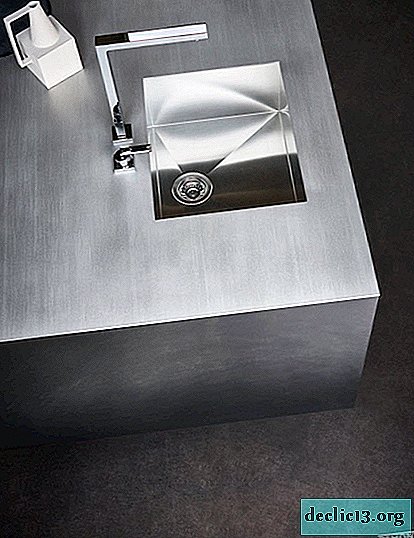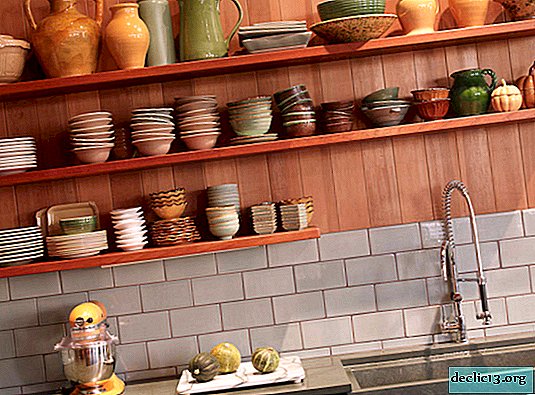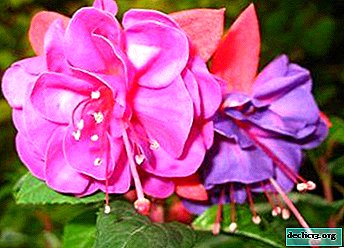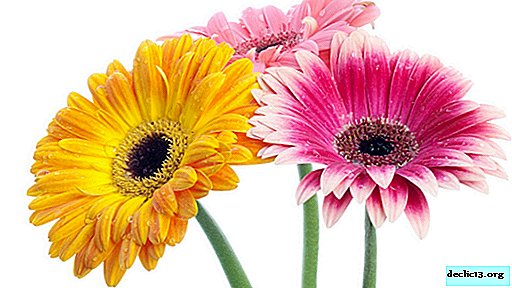Features of growing cyclamen from seeds. Photos, as well as typical methods of propagation and healing of the flower
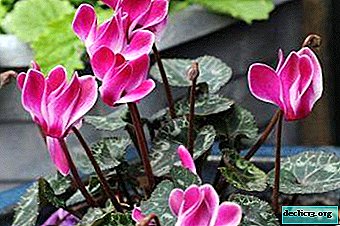
Cyclamen is a home flower that is in great demand among flower growers due to its beautiful flowering. Blooming buds can take a different color, and their petals resemble butterflies.
But for the reproduction of plants, special conditions are necessary. In our article, you will learn step by step how to propagate this beautiful flower seed at home. It will also be useful to watch an interesting video on this topic.
What does the plant look like?
The peculiarity of cyclamen in its colorful flowering, which lasts 3 months. In addition, the plant has the following characteristics:
- height - 30 cm;
- leaves grow from the root, heart-shaped force, leathery to the touch;
- the color of the leaves is dark green, with a silver tint;
- the root is presented in the form of a rounded bulb with a diameter of 15 cm, which has one growth point;
- the flowers consist of oval bent petals, pointed at one end;
- the color of the flowers can vary from white to rich purple.
Photo
Check out the plant photo below:




Breeding options
Cyclamen propagation occurs in various ways. Choosing the appropriate option, it is worth focusing on the type of plant:
- Tuber root division. This method is preferred for adult cyclamens of such varieties as European and Persian.
- Seed propagation - Applicable to any kind of cyclamen, even ivy.
- Rosettes - shoots of the European species take root more easily than the Persian ones.
- Subsidiary tubers. This option is great for breeding European cyclamen. Unlike other plant varieties, small children form near his tuber. They are easy to separate during transplantation and drop them into separate containers.
Read about how to propagate cyclamen leaves along with other methods here.
What is artificial pollination method?
To understand how to plant seeds at home and how to grow at home, let's first look at how these seeds look. Externally, the seeds of the plant resemble small brown beads. You need to collect them after flowering. But to get cyclamens from seeds and grow at home, you can use the method of artificial pollination. The procedure is as follows:
- Using a soft brush, transfer pollen from the stigma of one flower to another. Repeat the procedure several times.
- When the plants have faded, a seed box forms in place of the flower. Carefully collect them and wrap them in a napkin.
- After a while, the box will open on its own, and it will be possible to collect seeds.
Watch the video on cyclamen artificial pollination:
Character traits
Especially in demand among flower growers remains the seed method of growing and propagating cyclamen from seeds, as a result of artificial pollination. Therefore, if you are worried about what to expect from home seeds, then it can be argued that this method allows you to get a plant that is more healthy and adapted to living conditions.
ATTENTION: Seeds can be purchased at the store or collected independently. The second option remains preferable: how to collect and plant cyclamen from a seed at home, since the purchased material is often of poor quality.Sowing dates
When to plant seeds? Sowing is best done in February - March, but you can sow at any time of the year.
Stages of soil and material preparation
The preparation process includes the following steps:
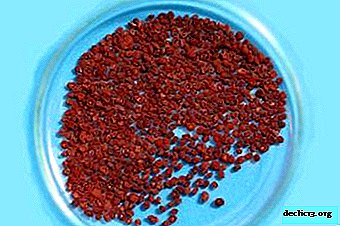 Shake out planting material from their dry boxes and soak in water. Add Epin extra or Zircon to it. These are drugs to stimulate growth. To prepare the solution, take 4 drops of the drug and 100 ml of water. After 12 hours, remove the seeds from the solution, put them on a cotton pad, covering with a wet bandage. After 24 hours, the seeds will swell and be ready for sowing.
Shake out planting material from their dry boxes and soak in water. Add Epin extra or Zircon to it. These are drugs to stimulate growth. To prepare the solution, take 4 drops of the drug and 100 ml of water. After 12 hours, remove the seeds from the solution, put them on a cotton pad, covering with a wet bandage. After 24 hours, the seeds will swell and be ready for sowing.- Soil must be steamed. Pour boiling water over it or hold for 5 minutes in the oven. This will remove the pathogenic microflora. To carry out disinfection 14 days before the upcoming planting of seeds.
- Seeds before planting at home, you can try to sprout, and then plant in pots. To do this, you will need to spread the planting material on a moistened gauze, and cover with a layer of fabric on top. After a day, plant the seeds in a container.
Pot selection
Sowing seeds is carried out in individual pots or in boxes. If the first option is chosen, then young seedlings do not need a transplant until they grow up, and the pot for them becomes small. When planting in boxes, it will be necessary to pick seedlings in separate containers when they have 3-4 leaves.
Choose a pot for cyclamen taking into account the size of the tuber. Between it and the edge of the container there should be a distance of no more than 3-4 cm. For a young plant, the diameter of the pot is 8 cm and no more. Adult specimens whose height is 13-15 cm will require containers with a diameter of 16-17 cm.
IMPORTANT: When does cyclamen bloom? If the pot is small, then cyclamen will bloom quickly, without gaining the necessary foliage. If it is too big, then it will take a long time to wait for the buds.The soil
The soil for the plant should be loose and nutritious, and also air- and moisture-permeable. You can use a commercial substrate designed for decorative floriculture. To prepare the soil, connect garden soil with peat in an equal amount and add a little river sand.
Landing
How to plant plant seeds? Landing is as follows:
- Prepare the container by laying expanded clay on the bottom.
- Fill the container with light nutritious soil and thoroughly moisten it.
- Sow the prepared seeds in a shallow trench or on the surface of the substrate, and then sprinkle with a thin layer of earth.
- Cover the container with film, since in the dark and warm seeds germinate better.
- Maintain constantly soil moisture, but do not fill the tank.
- Open film and ventilate daily
- After 1-1.5 months, the first shoots will appear.
Step-by-step care
Pick
 After 4-8 weeks, loops of purple-pink color will appear from the ground. This is the long-awaited cyclamen. A small nodule with a root is formed from the loop, which is rooted in the soil. Only then will the loop with the sheet unfold. 3-4 months after sowing, 2-3 leaves are formed on the plant. These are indications for a dive.
After 4-8 weeks, loops of purple-pink color will appear from the ground. This is the long-awaited cyclamen. A small nodule with a root is formed from the loop, which is rooted in the soil. Only then will the loop with the sheet unfold. 3-4 months after sowing, 2-3 leaves are formed on the plant. These are indications for a dive.
Seed plants in separate cups of 2-3 seedlings. The pick is carried out with a lump of earth and after transplanting the nodules, sprinkle with soil, which can not be done with an adult plant. Sprinkle his tuber to half.
Top dressing
Feeding young cyclamens up to 6 months is not recommended. Only after that you can use purchased fertilizers for flowering plants. Only their dosage should be 2 times less than that indicated in the instructions. Most often, for cyclamen, the following compounds are used:
- Kemira Suite.
- Ferovit.
- Blooms.
Watering
Up to a year, young shoots love moist soil. But adult specimens prefer moderate watering, especially in the summer. Young shoots need to be watered with a pipette. This will deliver water directly to the roots. Moisten the soil for young seedlings 2 times a week. Adult plants need only 1 time in 1.5 weeks.
Watch the video about watering young seedlings of cyclamen:
Pest and Disease Control
Cyclamen most often affects fungal diseases, among which:
- Gray rot. It is formed as a result of abundant watering, waterlogging. If a disease has been detected, then carefully remove the plant from the pot, remove the affected parts of the roots, and rinse them in a solution of potassium permanganate. Once the tubers have dried, plant the plant in a new pot with pre-steamed soil composition.
- Root rot. It affects a flower that has been affected by fungal pathogens living in the ground. To get rid of the disease, conduct treatment with glyocladine. Rinse tubers thoroughly in potassium permanganate solution and dry.
- Soot fungus. They infect the stomata and ducts of the leaves, leading to their death.TIP: Remove the fungal deposits on the plates with a solution of green soap (200-400 g of green soap per 10 l), and then with warm water.
Among the pests, the most dangerous for cyclamen remain:
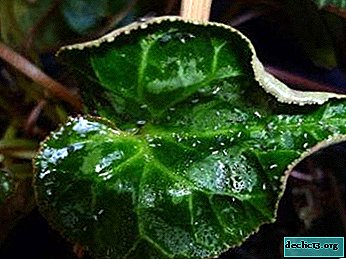 Aphid. It is very dangerous for plants, as it sucks the juice of leaves and destroys the flower.
Aphid. It is very dangerous for plants, as it sucks the juice of leaves and destroys the flower.To save it, it is necessary to wash the affected parts with a solution of laundry soap (1 liter of water and 30 g of soap).
- Thrips. These small insects are almost invisible, but on the plates they leave traces in the form of white furrows.
Insects live where humidity and heat are too high. The leaves of the affected plant become whitish, darken and fall off. Karbofos is effective in controlling thrips. You can use folk methods - infusion of garlic (2 cloves per 200 ml of boiling water).
- Mite. He defeats the leaves and flowers.
To combat the parasite, Fitoferm and Neoron are used. To spray not only a flower, but also soil and a pot.
Conclusion
The seed method of propagating cyclamen is the most effective and easiest option for obtaining a healthy and strong plant. If you properly prepare the planting material, soil and create full conditions for growth, it will soon be possible to admire the beautiful and bright flowering cyclamen.

 Shake out planting material from their dry boxes and soak in water. Add Epin extra or Zircon to it. These are drugs to stimulate growth. To prepare the solution, take 4 drops of the drug and 100 ml of water. After 12 hours, remove the seeds from the solution, put them on a cotton pad, covering with a wet bandage. After 24 hours, the seeds will swell and be ready for sowing.
Shake out planting material from their dry boxes and soak in water. Add Epin extra or Zircon to it. These are drugs to stimulate growth. To prepare the solution, take 4 drops of the drug and 100 ml of water. After 12 hours, remove the seeds from the solution, put them on a cotton pad, covering with a wet bandage. After 24 hours, the seeds will swell and be ready for sowing. Aphid. It is very dangerous for plants, as it sucks the juice of leaves and destroys the flower.
Aphid. It is very dangerous for plants, as it sucks the juice of leaves and destroys the flower.
